이충우 〈Figural Shape in Books〉
이충우 Figural Shape in Books
2007.08.23 (thu)-09.09 (sun)

책으로부터, 의미론적 오브제
고충환(Kho, Chung-Hwan 미술평론)
프랑스의 상징주의 시인 말라르메는 자신을 너무 많이 읽어서 너덜해진 책에다가 비유한다. 시인은 고래로부터 지금까지의 모든 책들을 읽었고, 그 책들과 더불어 고래로부터 지금까지의 삶을 살았으므로 지혜롭지만 극도로 노쇠하다. 그 늙은 정신은 의식 속에 자신만의 제국을 건설하고, 머리 속에 자신만의 도서관을 세운다. 그 책들이 주체를 낳는다. 주체란 곧 그가 읽은 책들의 소산이며, 그 자신이 이미 책인 것이다. 주체의 의식 속에서 매순간 쓰여 지고, 수정되고, 지워지고, 다시 쓰여 지기를 반복하는 이 무형의 텍스트들 중 지극히 적은 일부만이 언어의 틀 속으로 들어오는 특권을 누릴 수 있다.
이처럼 주체란 의식이며, 책이며, 텍스트이다. 그것도 미완의 의식이며, 미처 탈고되지 않은 책이며, 아직 완결되지 않은 텍스트이다. 언어화되지 못한 채 사장돼 버린 텍스트이며, 운 좋게 언어의 형식을 얻을 때조차도 언제든 수정되거나 대체될 수 있는 불안정한 텍스트이며, 활자와 활자, 말과 말 사이의 빈 공간을 떠도는 비가시적이고 비가청적인 영역 즉 간(間)텍스트이다.
이충우는 책을 소재로 하여 책을 만든다. 엄밀하게는 만든다기보다는 다른 형식의, 다른 의미의 책을 재구성한다. 책은 그의 작업의 주제이며 소재다. 책장을 잘게 찢어 띠를 만든 후 이를 새끼줄처럼 꼬아 끈을 만들고, 이 끈을 재차 직물 짜듯 엮어서 자리나 옷과 같은 정형화된 그리고 비정형적인 형상을 만든다. 이 일련의 과정을 거치면서 최초의 책은 본래의 형상을 잃고, 전혀 다른 형상을 덧입게 된다. 일종의 책 오브제로 범주화할만한 이 형상들은 책으로부터 파생된 것인 만큼 그 본성을 상실하고 있지는 않지만, 일정정도의 변형과 변질의 과정을 겪는다.
형상에는 여전히 최초의 텍스트가 간직돼 있다. 그러나 그 텍스트들은 책에서처럼 파사드(책의 전면, 책의 얼굴, 읽을 수 있는 텍스트로서 현상하는)를 형성하기보다는, 끈의 이면으로 숨어들어 어떤 흔적으로 변형돼 있다. 그러므로 그 형상은 책도 아니면서 그렇다고 옷이라고도 할 수 없는 사이적 존재, 일종의 간텍스트성을 드러낸다. 옷의 형상을 덧입은 그 오브제는 책처럼 여전히 어떤 의미를 발산하지만, 이때의 의미는 정형화된 언어의 형식으로 발신되지는 않는다. 그 의미는 오히려 정형화된 언어의 형식을 무력하게 하고, 코드화된 텍스트 읽기를 방해한다. 정형화된 언어와 형식 그리고 체계가 간과하거나 억압하고 있는 비가시적인 행간 혹은 이면으로부터 생성되고 있는 그 의미는 한 권의 책이 그 속에 움켜쥐고 있는 비가시적인 주름들을 드러내며, 한 권의 책 속에 응축된 무수한 저자들의 비가청적인 목소리를 드러낸다.
이를테면 질 들뢰즈는 저자를 ‘나’가 아닌 ‘우리들’이라는 복수로서 지칭하고 있으며, 나아가 롤랑 바르트는 ‘저자의 죽음’을 제안하기도 한다. 책 속에는 기실 저자가 알게 모르게 영향을 받은 선(先)저자들이 각종 인용의 형태로서 끼어들기 마련이며, 따라서 저작 행위란 이러한 선저자들로부터 유래한 인용행위와 이에 대한 저자 자신의 해석행위가 마치 직물처럼 긴밀하게 짜여진 상호 간섭의 소산이며, 주석의 소산에 다름 아니다. 더 나아가 하나의 텍스트가 완성되는 지점은 정작 저자 자신이 아닌 독자이며, 최초의 텍스트는 독자의 독서행위에 의해 변형되고 변질된다. 독자는 저자의 텍스트를 읽으면서 동시에 자신만의 텍스트를 써나간다. 따라서 그의 독서행위란 이미 그 자체 저작행위를 내포하고 있는 것이다.
책을 소재로 한 이충우의 오브제들은 이처럼 책의 형태가 변형될 만큼의 적극적인 독서행위의 소산인 것이며, 책의 의미가 변질될 만큼의 의식적인 저작행위의 소산인 것이다. 물론 그의 행위가 상식적인 독서행위와는 다르다는 점에 주목해야 하며, 바로 여기에 이 작가만의 작업의 특수성이 유래한다. 즉 그는 쓰는 대신 짜면서 저작을 수행하는데, 이것이 텍스트가 생성되는 전혀 다른 방식과 그 속성을 암시하게 된다. 이렇게 해서 만들어진 옷 오브제들(그 자체 책 오브제이기도 한)은 책의 텍스트적 의미를 옷의 사회학적 의미로 변형시키고 변질시키고 확대시킨다. 각각의 책장이 의미의 파사드를 보여주는 것처럼 옷은 사회학적 기호의 파사드를 드러낸다. 피에르 부르디외의 문화계급론에서처럼 개인의 취향과 계급을 드러내며, 집단무의식을 통해 제도의 억압을 내재화한 유니폼에서처럼 사회의 체제와 정체를 드러낸다.
이와 함께 이 오브제들은 제의적 의미를 드러낸다. 의식을 집전하는 사제의 예복을 연상시키는 오브제들이 낡고 색 바랜 표면질감으로 인해 고답적인 분위기를 자아내며, 그 특유의 형태가 종교적인 아우라를 불러일으킨다. 더욱이 직물의 일부를 이루고 있는 읽을 수 없는 텍스트가 정형화된 언어의 형식을 초월해 있는 종교적인 텍스트의 특수성(일테면 상징적인 언어)을 암시하고 있다. 이로써 이 오브제들은 책의 텍스트적 의미와 옷의 사회학적 의미, 그리고 종교나 제의의 주술적인 의미 등 이질적인 여러 의미의 지층들을 동시적으로 함축하게 된다. 이러한 의미론적 산종(散種)행위는 하나의 의미가 다른 의미와 만나는 다양한 접점들을 드러내며, 이를 통해 의미가 생성되고 변형되고 왜곡되는 다양한 지점들을 암시한다.
의미론적 산종 개념은 의미를 그 자체 고정되고 완결된 체계로 보기보다는, 다른 의미를 불러들이는 계기이거나 다른 의미와 접속하는 계기로 보는 것이다. 그럼으로써 처음의 의미가 변질되거나 그 외연이 무한정 확장되는 의미의 비결정적이고 가변적인 체계를 지시한다. 이러한 의미의 비결정성이나 가변성이 작가의 사진 작업에서도 확인되고 있다. 작가는 일련의 사진작업을 통해 옷 오브제 작업에서처럼 책, 의미, 텍스트의 개념현상을 변주하고 확장한다.
무표정한 얼굴을 클로즈업한 초상 사진 위에 ‘please tame me’라는 영문자 텍스트를 부가해 놓은 작품에서의 상황은 그대로 책의 그것과 일치한다. 종이 위에 쓴 텍스트와 얼굴 위에 쓴 텍스트가 의미론적으로 통하는 것이다. 여기서 ‘제발 나를 길들여줘’라는 영문자 텍스트의 의미는 사실은 그 이면에 ‘어떻게 하면 나를 읽을 수 있죠’라는 물음을 함축하고 있다. 그 문제의식이 나, 주체, 자아, 에고로 변주되는 자기정체성 문제와 통하며, 그 자체 일종의 얼굴의 사회학을 드러낸다. 즉, 얼굴은 주체의 파사드라기보다는 그 주체가 속해있는 사회의 파사드인 것이다. 다시 말해서, 그 자체 주체에게 속한 것(일테면 주체의 내면)의 반영이기보다는 사회가 주체에게 요구하거나 부여해준 기호(이미지)들의 반영인 것이다. 특히 표정의 개념(흔히 표정관리라는 속어)은 이러한 얼굴의 사회학 혹은 이미지의 정치학과 관련이 깊다. 작가의 이 사진작업은 이처럼 얼굴이 하나의 기호, 의미, 텍스트 그리고 책으로 변질되는 지점을 드러내고 있으며, 그 존재론적이고 사회학적인 배경과 관계를 드러낸 것이다.
더불어 다른 사진작업에서 작가는 ‘책을 찢다’라는 의미의 영문자 텍스트 ‘rip a book’을 부가해놓기도 한다. 그 의미는 실제로 책장을 찢어 끈을 만들고 이를 엮어 옷을 비롯한 여타의 오브제를 만드는 작업의 프로세스를, 그 속성을 그대로 지시한 것이다. 그런가하면 영어단어 ‘rip’은 ‘찢다’라는 의미와 함께 ‘잡아채다’ 혹은 ‘훔치다’란 뜻을 내포하고 있기도 하다. 따라서 책장을 찢는다거나 이를 통해 오브제를 만드는 작가의 행위는 단순히 그 실질적인 행위 자체로서보다는 일종의 상징적인 제스처로도 보인다. 그러니까 책이나 텍스트, 의미나 기호를 잡아채서 이를 자기화하는 독서행위의 속성과 그 프로세스를 드러내며, 그럼으로써 다른 책이나 텍스트, 의미나 기호를 불러들이고 퍼트리는 의미의 산종행위를 암시한다.
이처럼 이충우의 옷 오브제 작업이나 사진작업은 단순한 옷이나 얼굴의 경계를 넘어, 그것들이 어떻게 책이나 텍스트, 의미나 기호의 발신처일 수 있는가를 보여준다. 그리고 이는 유형무형의 모든 존재의 지점들을 의미론적인 대상으로 보는 기호학의 학적 인식과도 통하는 것이다.
A Semantic Objet d’art from Books
Stephen Mallarme, French symbolist links himself to the worn-out old books. He comments that the poet has read all of those books and living with them since the origin of the world. So they are old but wise. He also believes that the old spirits would bring their own castle and library. The subject is a product of the books and how he became a part of the books. Only a part of those invisible texts would take prestige in the boundary of languages with are written, modified, erased and written over and over again in recognition of the subject.
The subject is awareness of what the book and text has not accomplished. The subject can be modified even powered from the form in language, and is floating over the space of invisibility, impossible to listening from word and word.
Chung-woo Lee created another form of books with books. The book is his subject and key word. He rips off each page of a book by making bands and compiles those into the ropes for creating a stereo type form like textile fabric clothes or non stereo type creation. The original books loose the previous form through the process of his works and would acquire a totally different form. This transformation is categorized in a book objet d’ art as still keeping the original character even though the form is changed somehow and should spend time in the process of transformation and transmutation.
The form still keeps those texts, but the texts are transformed into the ropes of another face more than the origin façade (front of book, readable texts). Then, the form is between the relationship and texts, which we cannot refer to as a book or clothes. Even though the object still shows certain significance, the significance is not showing the linguistic form. It makes the linguistic form powerless and interferes with reading those encoding texts.
Gilles Deleuze referred to himself by the plural noun of ‘we’ not as the singular noun of ‘I’ and Roland Barthes suggests ‘A death of the Author’. A writing action is an outcome of mutual intervention between those quotations from the previous mentioned writers, and the action of translation of those writers. It’s like weaving quilts within a closed relationship. Furthermore, the finished interaction of a text is the reader and not the writer. The original text is transformed and transmuted by the reading action of the reader. The reader is also writing his or her text while simultaneously reading those same texts.
The objects of Chung-woo Lee is the outcome of an aggressive action of reading as much as is transformable of those books, and is the outcome of the awareness of the action of writing as much as it transmutable of the significance of those books. Sure of focusing on the difference from the common sense of the action of reading, it was originated only from his specialization on his work. He is doing an action of writing as he does weave those ropes of books. It implicates totally difference of outcome of texts. Through the process of his works, the object of clothes made by books transforms and transmutes the textual significance of books to sociologic significance. The clothes are showing a façade of sociologic semantic as each page of book is showing the façade of semantic. It demonstrates personal taste and level as a social Critique of the Judgement of Taste of Pirre Bourdiew, and demonstrates a social system and identity inside of high-foned systems through the awareness of groups.
This object displays a significance of worship in Shamanism. The unreadable texts which is a part of the exterior texture implicates the particularity of religious texts (symbolic texts) overcoming the stereo type of languages. So, the object transcends the text significant of books, sociologic one of clothes and a religious and worship significance each of which has different layered significances. The action of semantic outcome is displaying the junction between the differences, and implicates the process of production, transformation and distortion of the variation.
The concept of semantic production is a motif of a contact with another semantic which can bring semantic significance rather than fixated itself or manage it as a completed system. The artist therefore plays a variation and expands the status quo of books and significant texts through the work process of a photograph just as he does in the process of the object of the clothes.
It is the coincident of the book itself that in the significance of the work which is English characters, ‘Please tame me’ is added over the zoomed in portrait without expression. It is the same meaning between the texts on the paper and over the face. It also demonstrates the question of ‘How can I read myself?’ with the sentence.
The awareness of the question displays the sociology of the face itself through the ego identity with the variation of me, subject, ego, etc. It reflects an image or symbol pressed by society rather than a reflection of the subject or object itself (the inside of subject). In special, the concept of expression is the sociology of these faces or politics of image. The work process of this photo displays an existent and sociologic background and relationship by demonstrating the junction of the transformation of books with the junction of the symbol, meaning, text and transformation of the face.
He also adds the English words, ‘rip a book’ on the process of the photograph. It indicates the origin of the work process which is organizing the other objects such as rip a book, creating ropes and waving the clothes. The word rip also has another means also steal and be caught. So, the artist’s work is also a symbolic gesture within the real action of the art itself. He does catch the significance of the book, text and symbol to internalize those into the action of reading with the action to produce other books, texts, significances and symbols.

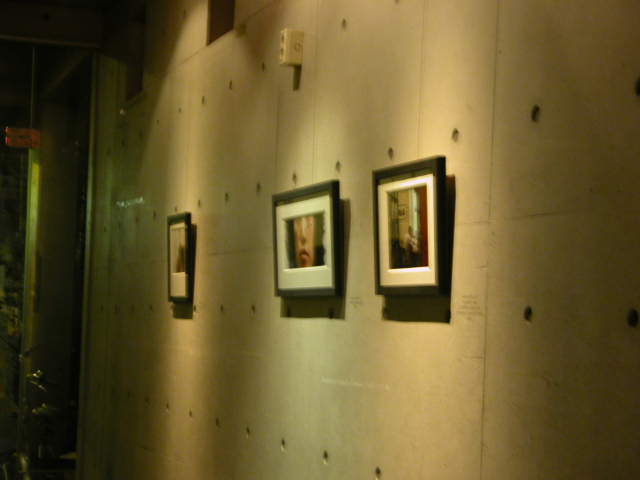
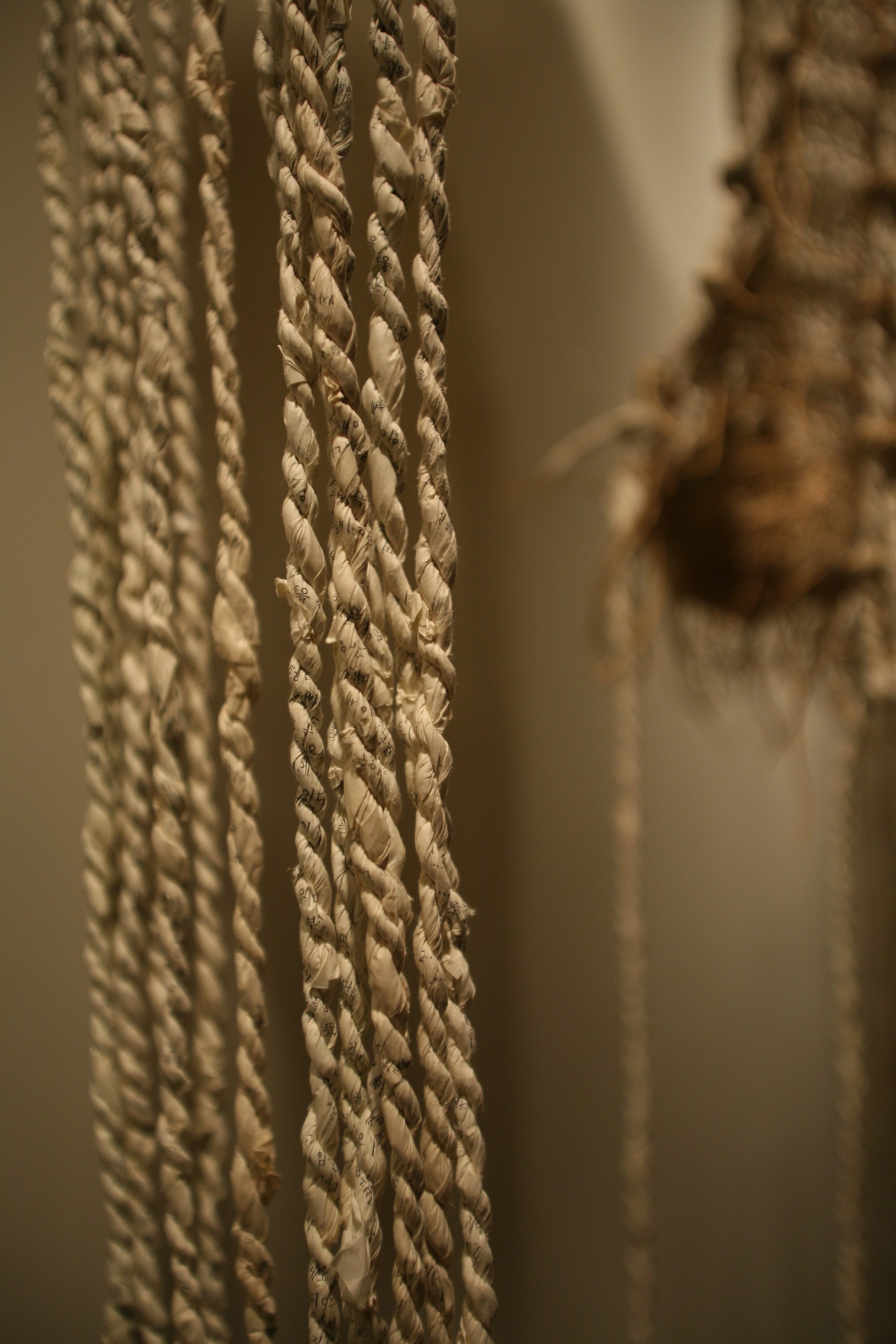
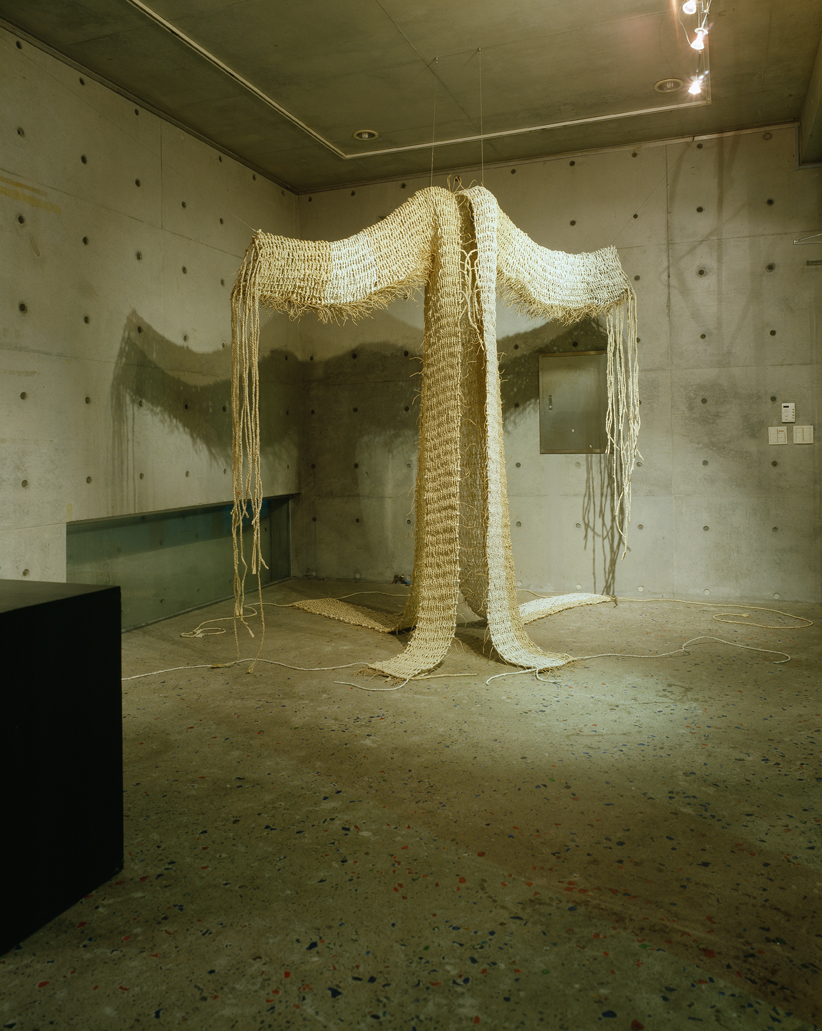
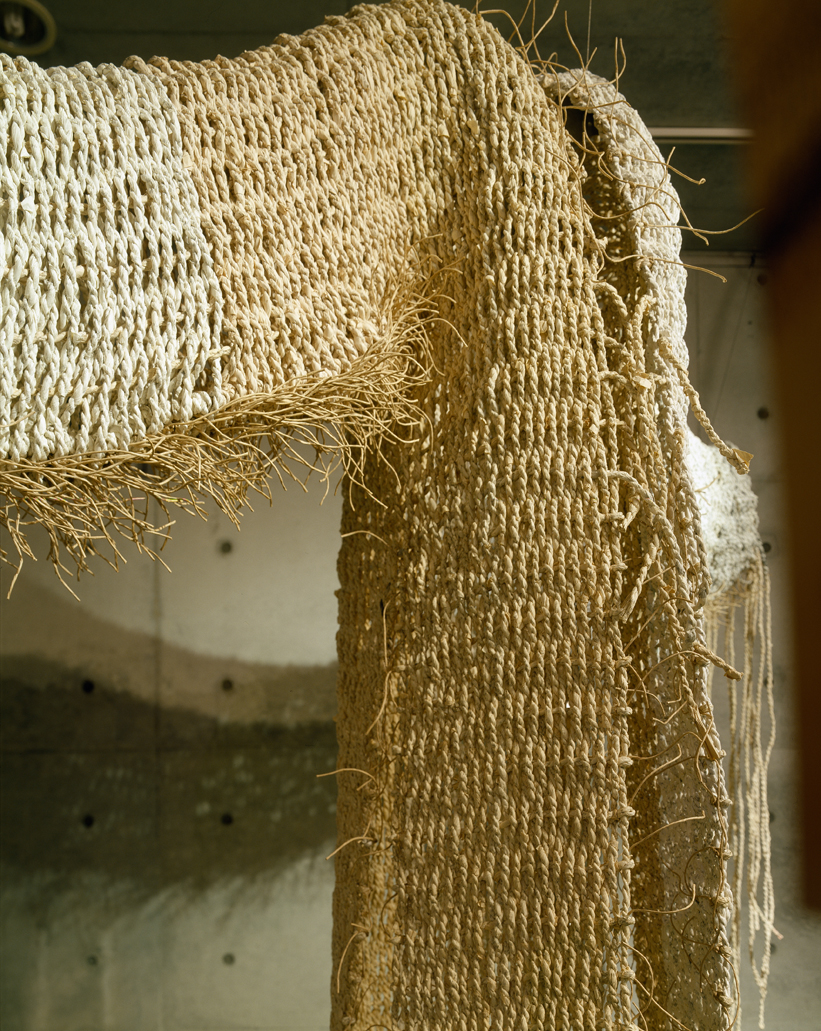
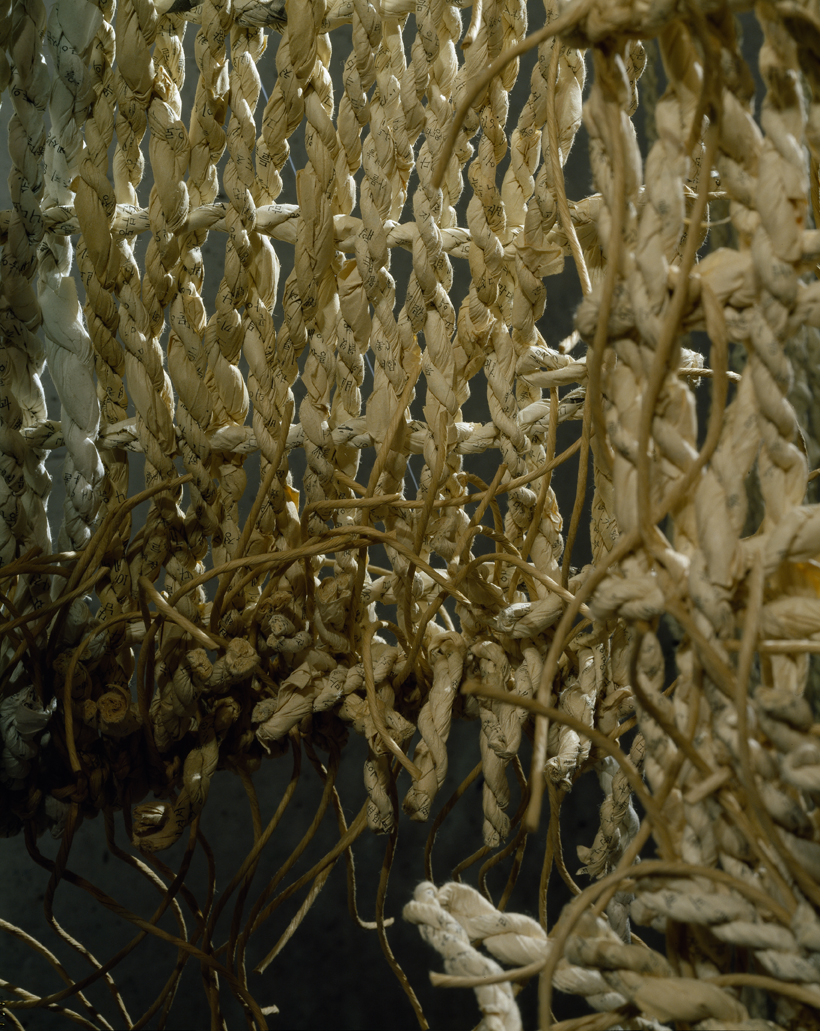
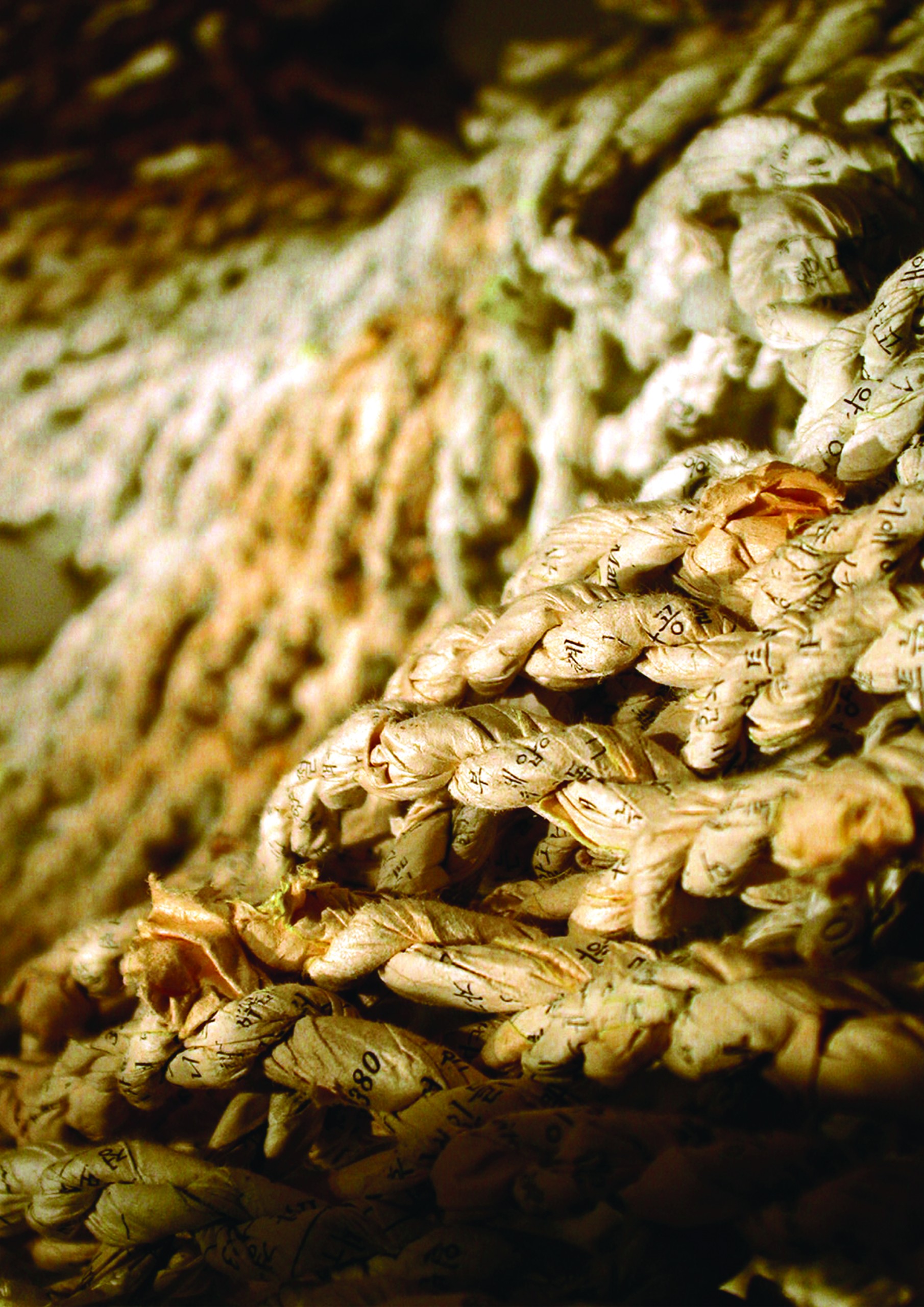
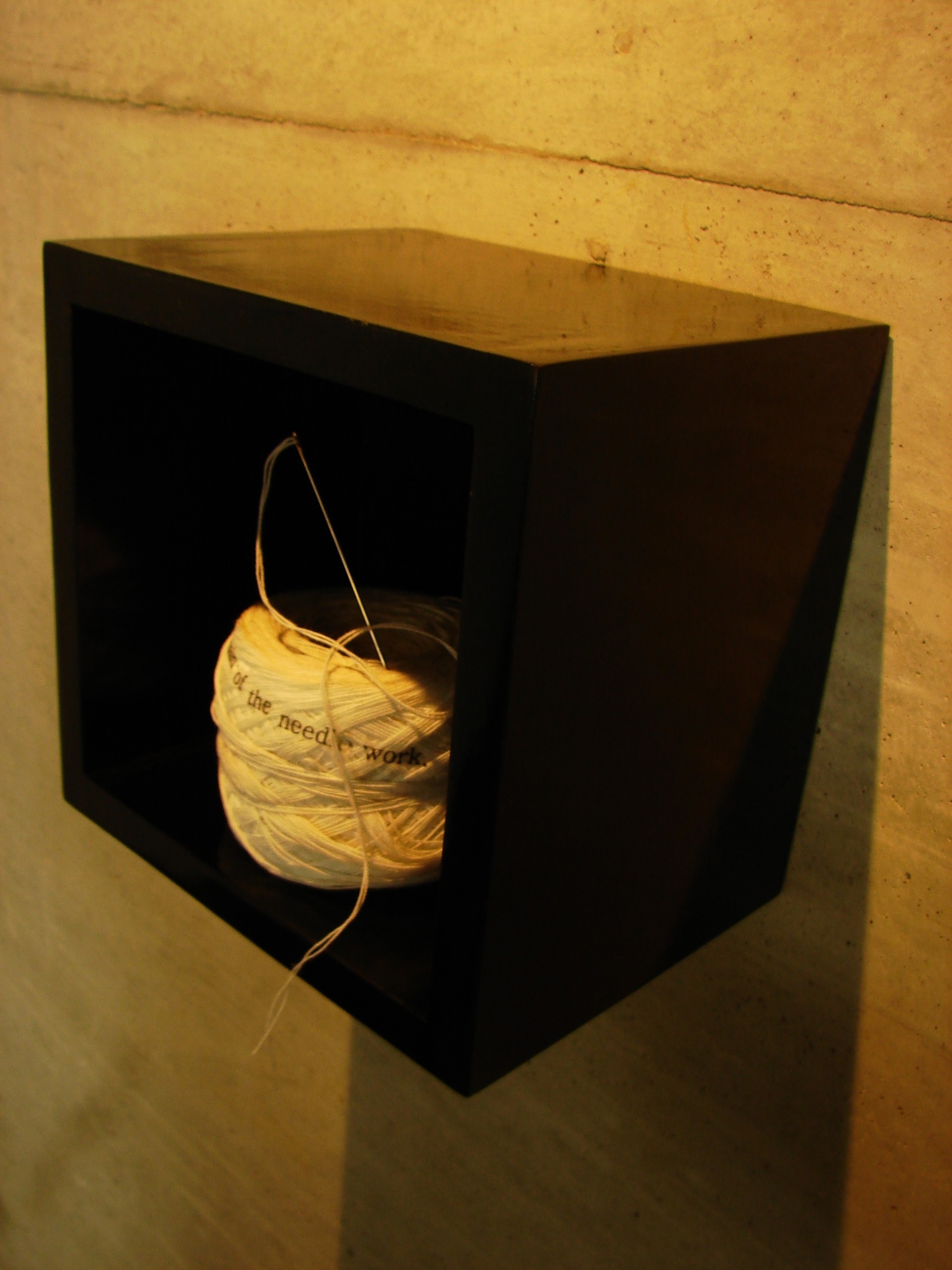
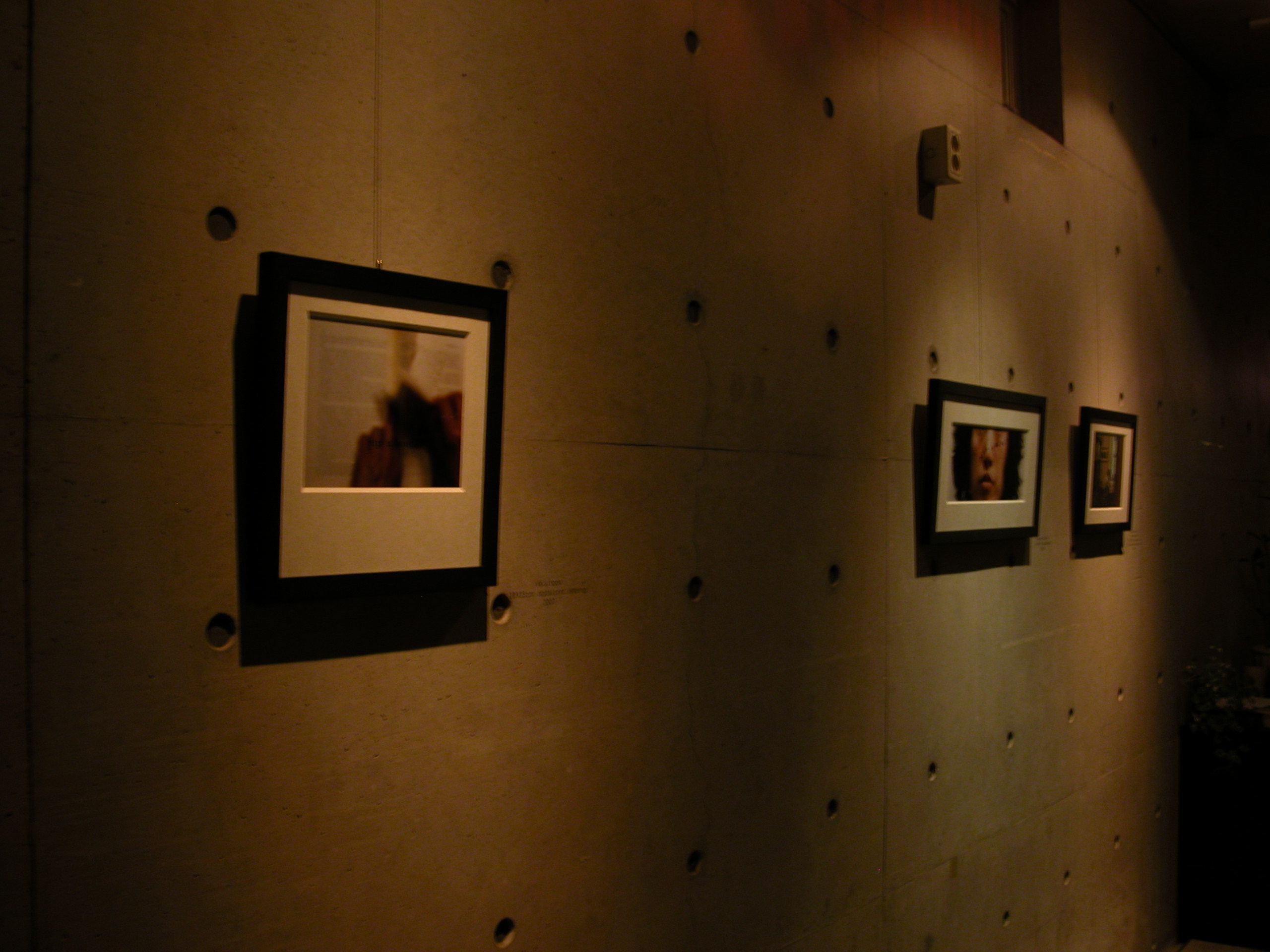



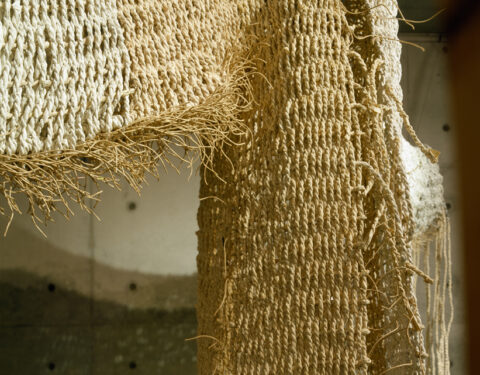
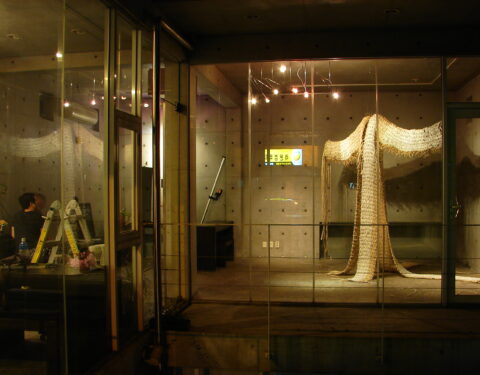
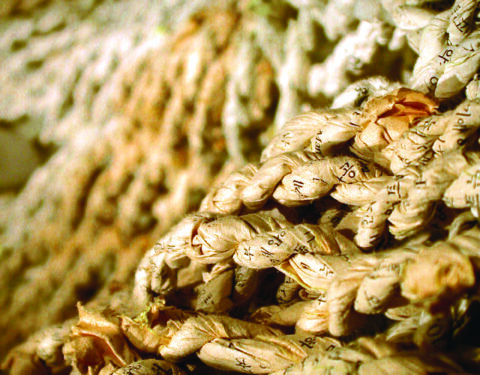

Submit a Comment